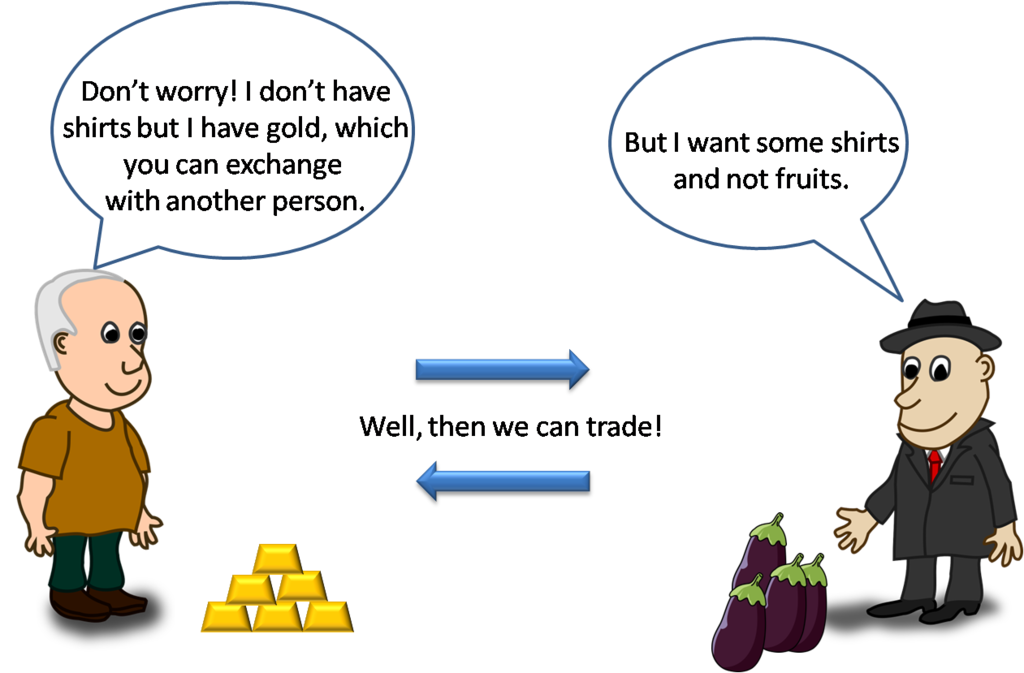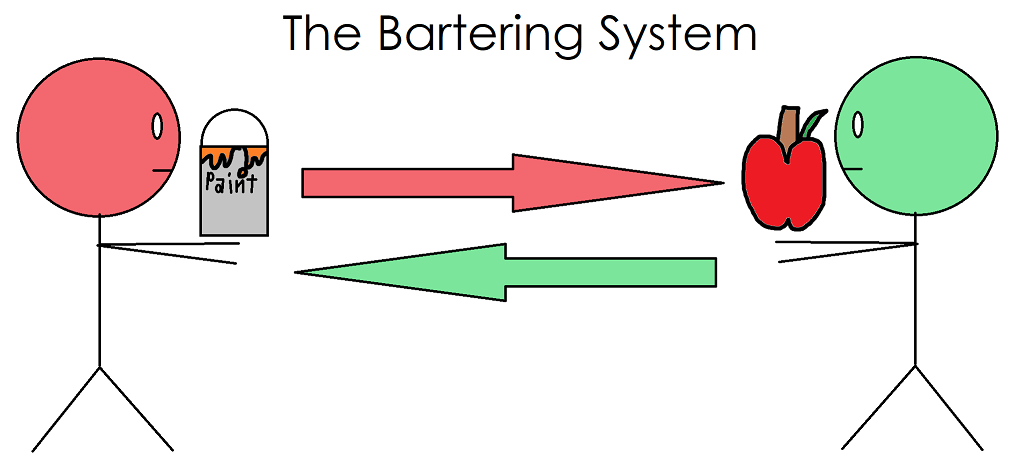Barter or Exchange In the field of Commerce
In the field of commerce, barter, exchange or barter is a system of exchange in which the participants in a transaction directly exchange goods or services for other goods or services without using a medium of exchange, such as money.
Economists distinguish between the barter and the gift economies in many ways; barterness, for example, implies immediate reciprocal exchange, not deferred in time. Barter usually takes place bilaterally, but may be multilateral (eg, through a commercial exchange). In most developed countries, the barter usually only exists in parallel with monetary systems and in a very limited way. Market players use barter as a substitute for money as a method of exchange in times of monetary crisis, such as when the currency becomes unstable (during hyperinflation or a deflationary spiral) or simply when there is none available to trade.
There are no ethnographic studies that show that any society past or present has primarily used barterness without other means of exchange or measurement, nor have anthropologists found evidence that money emerged from barterness; instead, they have found that the most common means of exchanging goods and services has been donation (credit granted personally with an interpersonal balance maintained over the long term; that is, the gift economy). However, economists since the time of Adam Smith (1723–1790)—taking as examples premodern societies, often completely imagined—have used the inefficiency of the barter to explain the emergence of the economy, and of the same discipline ofeconomic sciences.
Diversity and forms of barters
The forms of barter vary greatly depending on the nature of the goods exchanged, the number of participants and the time course of the exchange.
The goods exchanged by barter can be material, for example mineral resources, land, or even non-material, such as services, knowledge, pollution quotas, ideas or even symbols, as the change. These goods are divisible when it is possible to share them, or indivisible, as is a banknote. When a standard of measurement makes it possible to evaluate the quantity of a divisible good, these goods are measurable.
Barter is multilateral, bilateral when it takes place between two participants, or non-bilateral between at least three participants. The transfers of ownership which effect the exchange may be immediate, or deferred under conditions depending on future events.
It is also the case in which the obtainment of the desired good must be deferred for reasons of seasonality or perishability.
A special and specific form of barter is constituted by the exchange of apartments in the summer periods, and by the worldwide hospitality networks ; mostly recent associations born in recent years, which offer free accommodation and accommodation to members, or members of the same.

The above picture explains the process of the Barter System. Jerine Victor, CC BY-SA 4.0, via Wikimedia Commons
It can be fashionable again…
Bartering also returns in case of hyperinflation. When money depreciates very quickly, people lose faith in money and stop accepting it as a means of payment. The advantage of barter is that the buyer and seller do not have to worry about the rapidly rising prices: The same sum of money may be worth half as much tomorrow as it is today, but a kilo of coal that is not burned is still the next day a kilo of coal.
Today, so-called swapping events are still organized. No money is used during swapping events. Everyone brings their goods/clothes to such a swapping event and can exchange them for goods/clothes of other persons without any intervention of money. Other activities are also organized at such events, usually to make those attending such events aware of the ecological aspect of barter.
Barter market for companies
Barter between companies or “Bartering” exists and develops first in Anglo-Saxon countries and then in Europe. According to the International Reciprocal Trade Association, the trade body of the business-to-business barter industry, more than 400,000 businesses traded $10 billion globally in 2008 — and thanks to these platforms trade between professionals is growing by an average of 15% per year in a difficult economic context marked by less financial liquidity.
Read also: Business Idea for SME (Small Medium Enterprise)

The above picture explains the process of the Barter System. Jerine Victor, CC BY-SA 4.0, via Wikimedia Commons
Bartering on the Internet
An increasingly popular form of bartering on the web, is called ” swapping ” , from swap , and is generally informal, in which individuals or groups of people send clothing and accessories, of comparable value, on a trust basis.
In recent years, portals or forums dedicated to bartering have appeared on the Internet , many of which are completely free, offering an exchange service between users and aiming to spread the spirit of this economic method.
The goods exchanged are the most varied, from clothing, to DVDs, to music CDs, to all kinds of objects and gadgets and may already be in the possession of the swapping participants , purchased specifically or created with various techniques, often following a predefined theme. There are also e-mail swaps, in which information, opinions or themed photos are usually exchanged.
There are ad hoc applications to activate bartering actions even in mobile mode.
Read also: SWOT Analysis (Strengths, Weaknesses, Opportunities, Threats) : definition, explanation and examples
Political Elites | Who are they? | The elites or the power elite?
Sources: PinterPandai, Squareup, Corporate Finance Institute, Economic Help
Photo credit (main picture): BeeDoubleuroolerl554 (CC BY 4.0) via Wikimedia Commons



